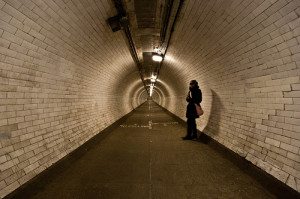Claustrophobia
Claustrophobia is an intense fear of confined spaces or sometimes a fear of being trapped with no escape. It is a common problem and affects approximately 10% of the population.
Like most phobias, Claustrophobia is an irrational fear and is a response to perceived threat rather than real danger. It is more the thought about being trapped which then triggers the intense feelings which can accumulate into the fight or flight response and triggers panic attacks.
When we think of confined spaces we often think of places where the body is cramped into somewhere where you cannot move and while this would be an extreme predicament it is one that most people do not come into contact with. So the fear is transferred onto places or situations where the individual may get trapped, or a place where they feel there is no escape. These situations may include
1. MRI scans in hospitals
2. Trains
3. Planes
4. Lifts
5. Toilets
6. Changing rooms in department stores
7. Being in a small car (In the back seat with no rear doors)
8. Tunnels
9. In crowds
When a person exhibits fear around such places, the anxiety may be so pronounced that that person feels the need to evade the situation and they bring in an avoidance strategy. This means the individual will go out of their way to avoid any situation where they may be exposed to the fear.
Unfortunately, avoidance makes the fear worse.
The physical symptoms of Claustrophobia are similar to other phobias where panic is displayed:
1. Dizziness
2. Shaking
3. Sweating
4. Heart pounding
5. Shortness or gasping for breath
6. Nausea
7. Sense of unreality
8. Wanting to go to the toilet
The cognitive or psychological symptoms are also similar to other phobic reactions:
1. Thought of losing control
2. Fear of what others may think of them
3. Thoughts about collapsing or fainting
4. Thoughts about running out of air and dying.
What are the causes of Claustrophobia?
Claustrophobia may have been caused by an early childhood experience where the child became distressed in a particular situation. Sometimes the child may have even been traumatised by this event.
I have come across many initial sensitising events in claustrophobia. Such as. Being trapped in a cupboard. Being trapped in a small toilet. Having an elder brother or sister sit on you when you are under your bed blankets. Getting stuck behind a wardrobe, and many more.
But, this reaction and way of thinking may have also been a learned behaviour. For example, a parent and child in a lift when the lift stops working and the parent goes into panic. The child will automatically believe this is a scary incident and one to be afraid of. Then an association is created, that lifts are dangerous. Then the thoughts about what may happen in a lift become distorted and this way of thinking can then be attached to other places where the individual may feel they could or will become trapped.
Help for Claustrophobia?
I tend to use a mix of hypnotherapy to deal with the emotions and Cognitive behavioural therapy to help deal with the faulty thinking patterns and beliefs.
For example, I would use hypnosis to hypnotically expose the client to the object and desensitise the feelings associated. This is a sort of hypnotic rehearsal.
I will also use some CBT techniques to help you deal with your thoughts and beliefs. For example, a person may believe that if they go in a lift, they will get stuck, then they will panic, lose control and faint, then they will run out of air and die.
The belief in this, for the individual, will be extremely high. But we need to address the thought that, firstly, getting stuck in a lift is rare, panic attacks are not about losing control so much but more of a defense mechanism to protect us from danger, if we truly lost control, it would be the worst defense response going. And finally, in a panic attack the blood pressure raises so you are far more unlikely to faint as fainting tends to happen when the blood pressure drops. And of course, lifts are not designed to be air tight, so there is no chance of running out of air.
To the claustrophobic, they may already know this, but in the situation where they feel extreme fear, all rationale goes out the window. But we still have to alter these thoughts so that the fear subsides.
We also introduce in vivo exposure, this is where you expose yourself, gently, to the thing you fear. It is done in a highly structured way so that the fear is released from the least fearful situation, right up to the most feared situation.
Because Claustrophobia is often first felt during childhood, I also use regression techniques to help the phobia at its route cause.
If you or anyone else suffers from Claustrophobia. Then it is something which can be overcome. It may take several sessions, but if you are committed to change then I have seen some wonderful results.
0800 849 94 94
01925 354 820
64 Shackleton Close – Old Hall – Warrington – Cheshire – WA5 9QE
Image courtesy of http://www.flickr.com/photos/turyddu/

